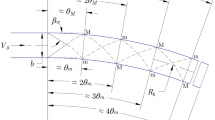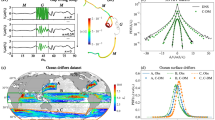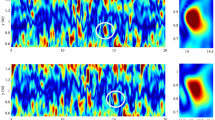Abstract
I REPORT here an interesting discovery, made while investigating velocity profiles close to a solid boundary. The experiments were carried out in a 5 inch channel of square section filled with water to a depth of 4.5 inches. Total head and static head tubes constructed of hypodermic tubing (0.020 inches outside diameter; 0.010 inches inside diameter) were used to measure the head by means of a 0–5 inch water gauge transducer of differential transformer type. Experiments were performed in a region of fully developed turbulent flow in order to discover the effect on the velocity profile of roughening the channel bed by sticking sand grains of various known dimensions to it by means of double-sided ‘Scotch-Tape’.
This is a preview of subscription content, access via your institution
Access options
Subscribe to this journal
Receive 51 print issues and online access
$199.00 per year
only $3.90 per issue
Buy this article
- Purchase on SpringerLink
- Instant access to full article PDF
Prices may be subject to local taxes which are calculated during checkout
Similar content being viewed by others
References
Preston, J. H., J. Roy. Aero. Soc., 58 (February, 1954).
Author information
Authors and Affiliations
Rights and permissions
About this article
Cite this article
COSSAR, A. Effect of Adhesive Tape on the Velocity Profile of Water. Nature 227, 1044 (1970). https://doi.org/10.1038/2271044a0
Received:
Revised:
Issue date:
DOI: https://doi.org/10.1038/2271044a0
This article is cited by
-
Drag Reduction arising from Adhesive Tapes
Nature (1971)



